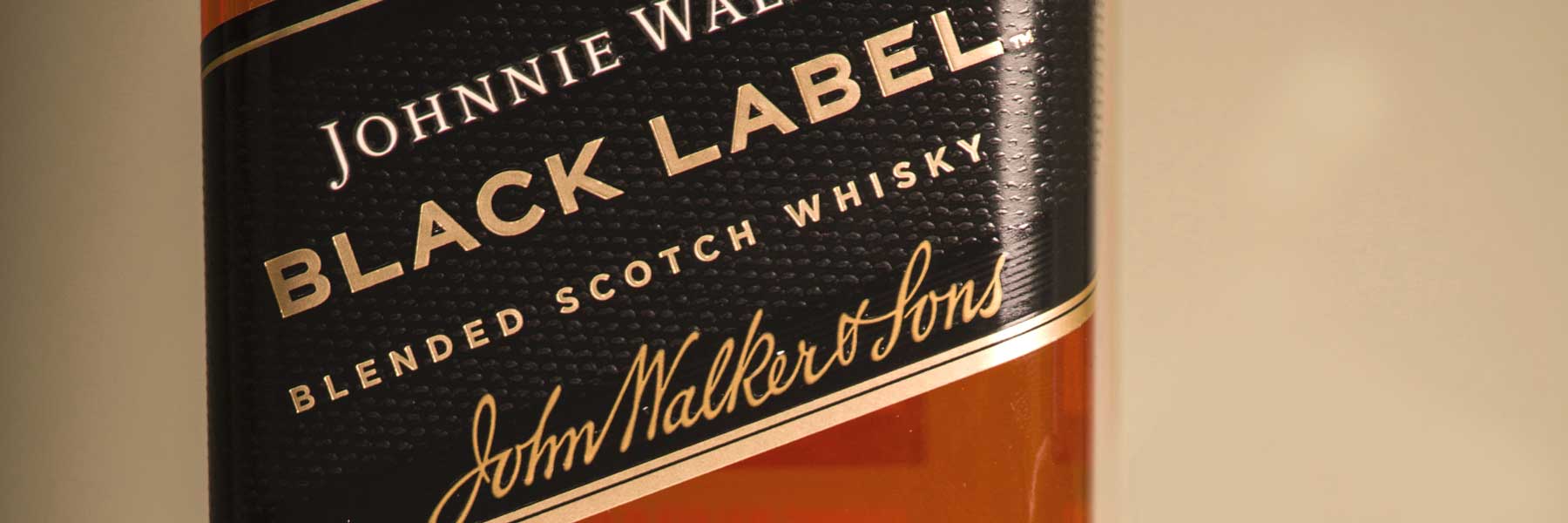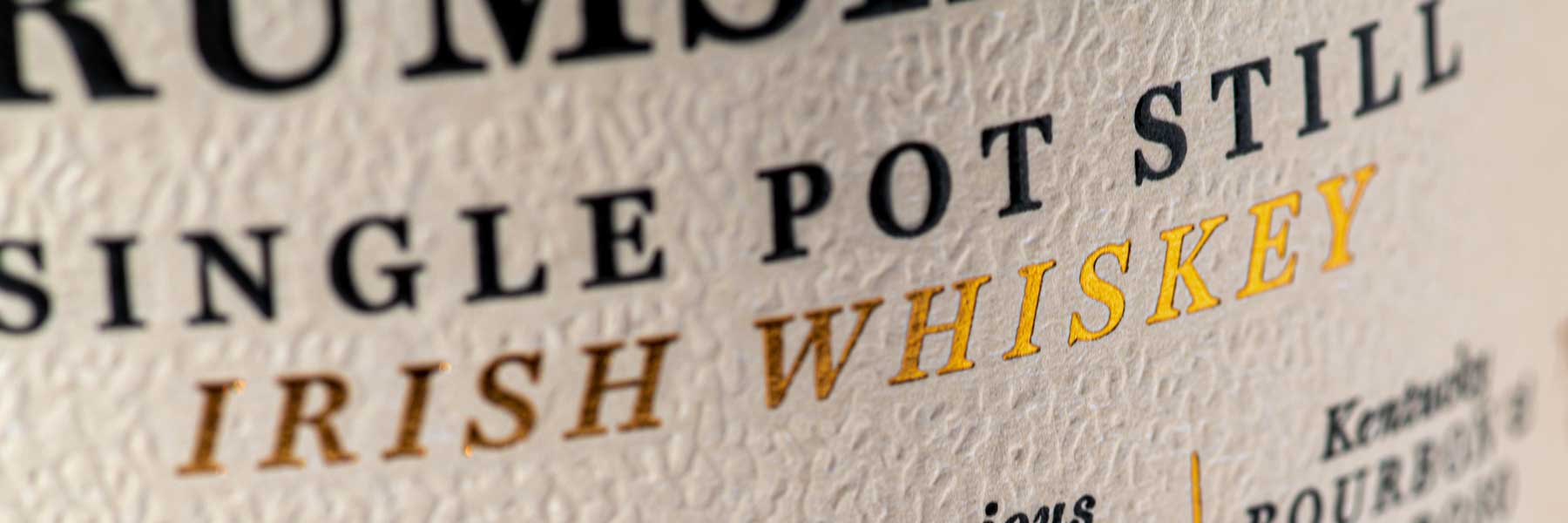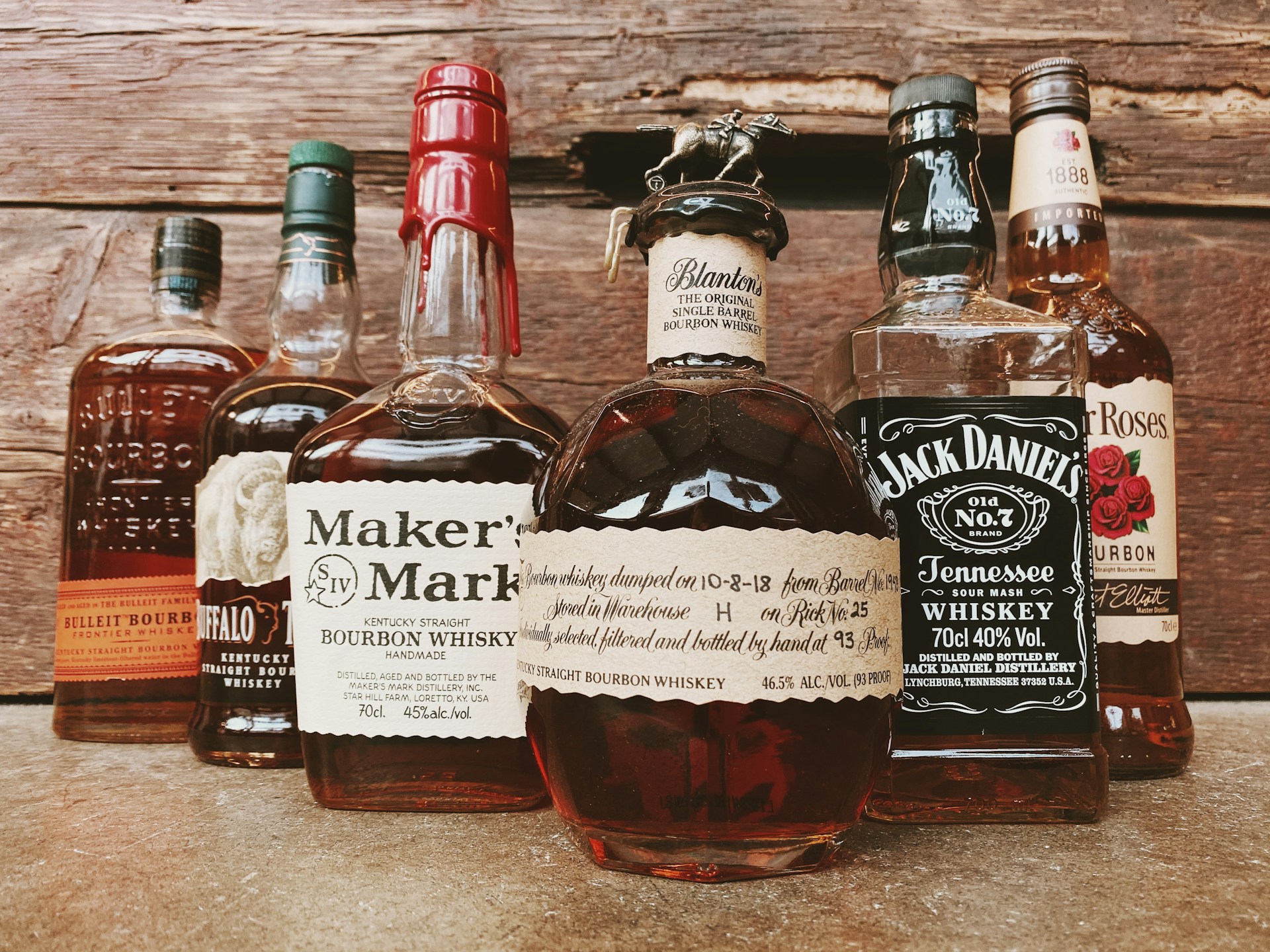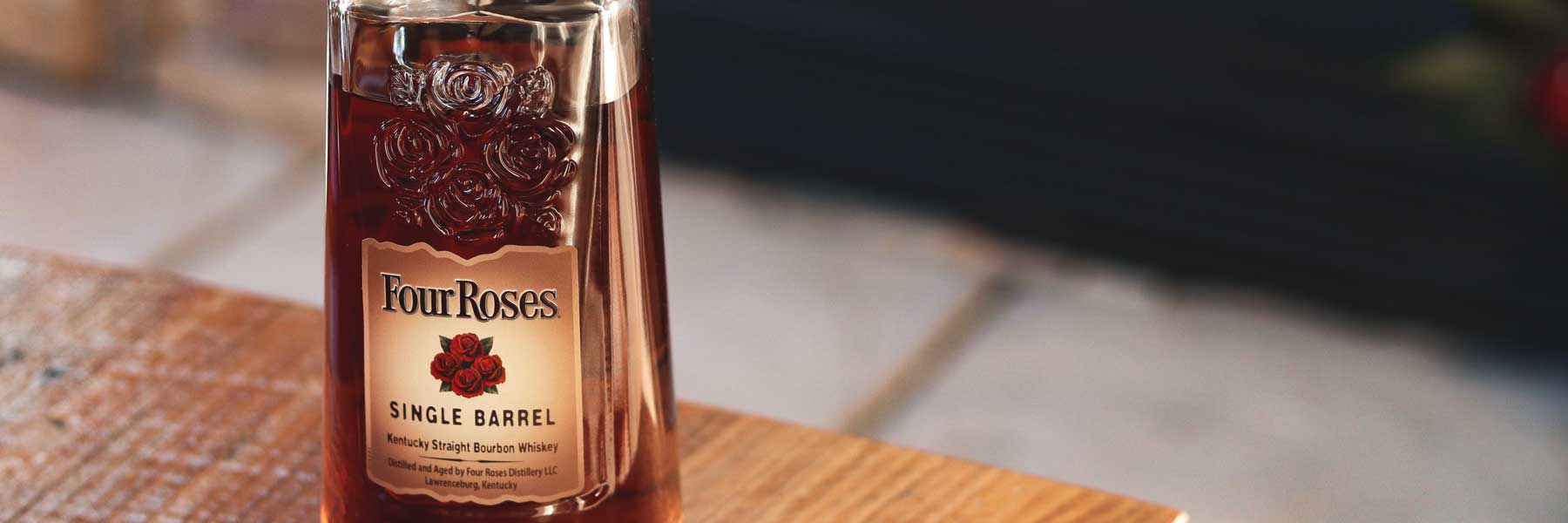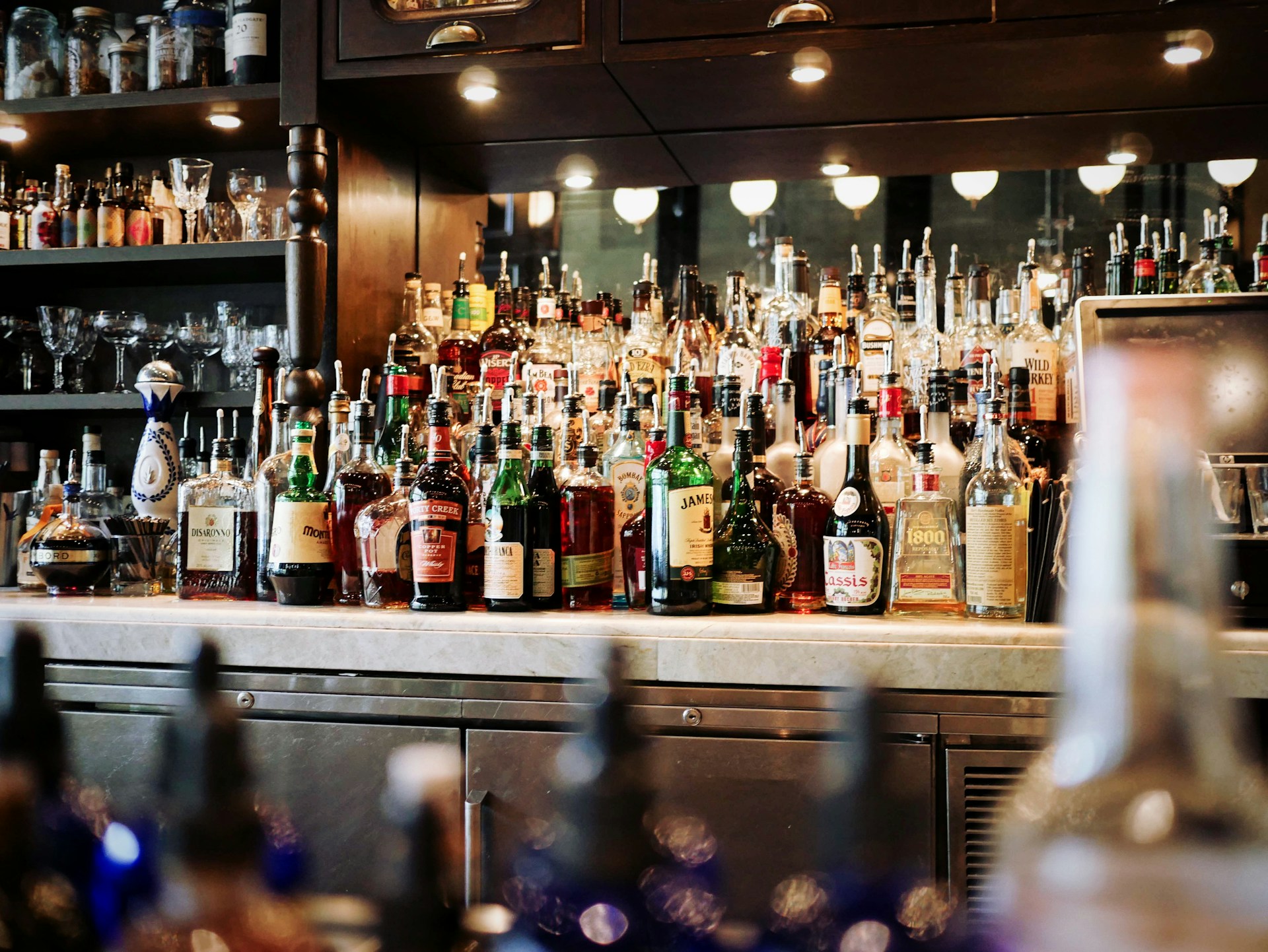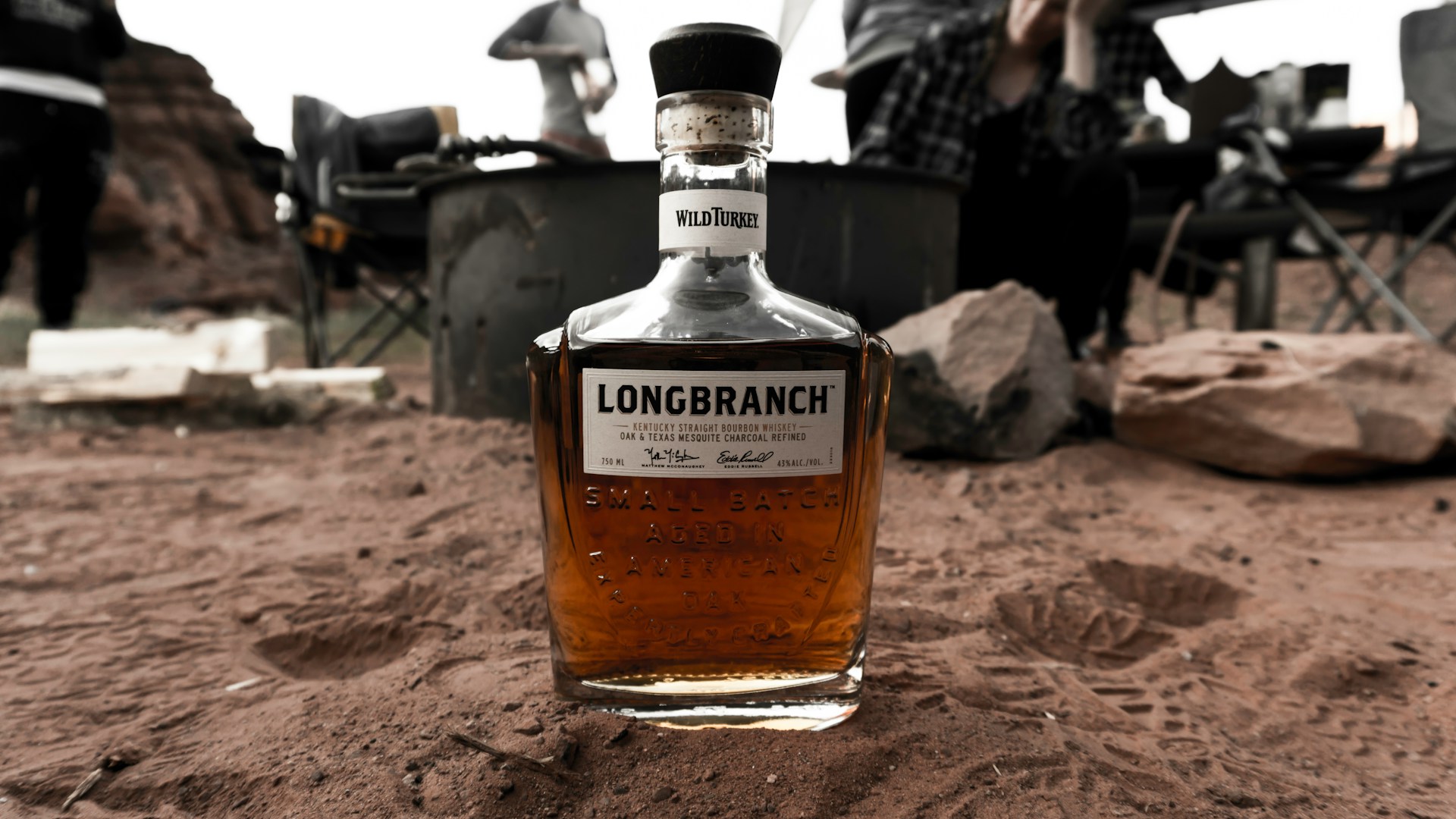What is blended Scotch whisky?
Last updated on August 13th, 2024
A whisky consisting of both malt and grain whiskies from multiple Scottish distilleries. These whiskies are either ‘pot’ or ‘column’ distilled using water, yeast and cereal grains including malted barely, rye, wheat, maize, oats, millet or un-malted barley. Blended Scotch must be aged for a minimum of three years in wooden casks prior to blending and be a minimum of 40% ABV. The only permitted addition to blended Scotch is E150A ‘caramel colouring’.
Despite the growing popularity of single malts, blended Scotch still accounts for an estimated 90% of the overall Scotch market. A considerable portion, considering that each and every second, 53 bottles of Scotch are sold around the world.
But this is no surprise.
Blended Scotch can be an artful drinking experience, striking a flavourful balance between potent single malts and the sweet smooth taste of other cereal grains.
Outwith the heavily marketed realm of single malts, there are some truly wonderful blended Scotches to behold. So let’s take a closer look.
What is blended Scotch whisky? How is it made? And what bottles are worth buying as you venture into this extensive category?
Let’s dive in.
What defines blended Scotch whisky?
- Blended = whiskies from multiple distilleries
- Scotch = made in Scotland & cask aged for 3 years minimum
- Whisky = single malt or grain whisky
Blending is the skilful method of curating multiple whiskies and mixing them together to create a new and desirable flavour profile. You can actually do this yourself at home with as little as a handful of bottles, but this process is typically left to Master Blenders with decades of experience. With their highly sensitive palate, they select casks of whisky from multiple distilleries to consistently create their pre-determined recipe. No easy task, considering that no two casks are the same – even from a single distillery!
For context, the famous Johnnie Walker Black Label Scotch blend is made of up whiskies from more than 29 Scottish distilleries.
Scotch simply defines the origin of the whiskies within the blend. Scotch blends can only ever contain whiskies made and aged in Scotland. (Similarly, Irish blends can only contain whiskies made and aged in Ireland.) These stipulations are heavily imposed by both respective governments.
Whisky is an umbrella term which can refer to various subtypes. In the context of blended Scotch, ‘whisky’ refers to the combination of both single malt and grain whiskies in various volumes and proportions – depending on the recipe.
These whiskies differ in how their made, both in terms of their ingredients and the equipment used to make them. If you’re unfamiliar with how whisky is made, it’s worth reading about the basic methods involved below.
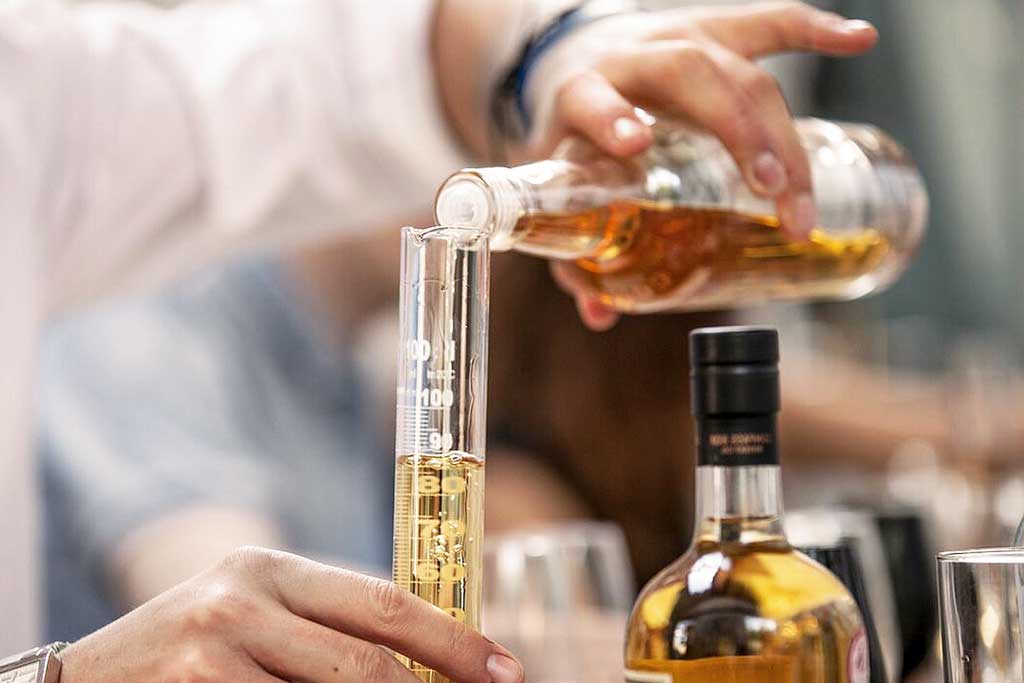
How is blended Scotch made?
Single malts are often what define the overall character of a blended Scotch, whether it’s malty, spicy, smoky or peaty. These act the core flavour component/s that dictate the overall character of the final blend.
Single malts are made by a single Scottish distillery using water, yeast and 100% malted barley. This whisky is strictly distilled using those beautiful copper pot stills you’ll likely have seen on pretty much any advert or packaging tube.
Pot distillation is a batch-basis method, making it comparably slower and more labour intensive than grain whiskies. This technique involves boiling distiller’s beer (known as wash) in two separate stages until it becomes purified new make spirit.
To legally become a single malt, it must be aged for at least three years (and one day) in wooden casks to mature. This is where the beautiful colour and further flavour complexity develops with time.
Grain whiskies act as the ‘filler’ within Scotch blends. They’re typically sweeter, lighter and often less boisterous than single malts – making them perfect for balancing big malty, smoky or peaty flavours.
Grain whiskies are made primarily from cereal grains such as rye, oats, millet, maize, wheat or un-malted barley. These cereals tend to produce softer, fruitier alcohol known as neutral grain spirit which are predmoninantly column distilled.
Column stills are a continuous production method, which produce very strong distillates containing very little esters and congeners. Compared to pot stills, column stills are much more efficient and can be operated more cheaply with faster, higher yields.
This is what reduces the overall cost of blended Scotch whisky as grain whiskies are simply much cheaper to distil. They also often reach maturity more quickly and can be used for blending after the minimum three years of cask maturation. Meanwhile, single malts tend to require longer ageing periods (beyond 3 years) to maximise their full flavour potential.
Blending them together
After each distilleries casks have all been seperatley matured, the blended Scotch can be made. The proportions and volumes of single malts and grain whiskies are infinite, therefore a master blender follows a pre-determined recipe and their highly attuned palate.
Reverting to the example of Johnnie Walker Black Label, whiskies from more than 29 distilleries are collated for this famous blend. However, as the bottle is stated as 12 years old, all of the whiskies within the blend must be a minimum age of 12 years.
Whiskies of varying ages may be used to make a Scotch blend, as long as they’re a minimum age of three years or the age stated on the bottle. You’ll never pay for a 18 year old blended Scotch that contains 3 year old whiskies. (Just so you know!)
Which is better single malt or blended?
Neither single malt or blended Scotch are ‘better’ than the other. Both types of whisky have their merits and their uniquely enjoyable characteristics may lead you to prefer one over the other. Despite the growing popularity of single malts, blended Scotch whisky still reigns as the most common subtype of Scotch whisky.
Elaborating further…
Single malts may impart a loftier impression thanks to their romanticised production methods. Notions of a single distillery, carefully crafting malted barley from grain to glass conjures a more purist perception – free from the addition of cereal grain whiskies.
Combined with lengthier cask maturation and their ‘single origin’ storyline, it’s easy to see why single malts are deemed the superior spirit of choice.
But the beauty of blended Scotch is in the balancing of flavour, the key factor which whisky is ultimately all about. Right?
Celebrating the best characteristics from single malts, mixed with the delicate sweet notes of grain whiskies can become a harmonious hybrid of whisky excellence.
Simply put, a wonderfully blended Scotch can be an excellent choice compared to a youthful single malt – any day of the week. It’s all a matter of opinion.
Is blended Scotch whiskey better?
This depends on the Scotch and the beholder. Blended Scotch whiskies have something of an inferior reputation compared to single malts. This mainly due to their cheaper production methods (column distillation) and use of alternative cereal grains.
However, to question if ‘blends are better’ would contradict market trends. According to Edrington-Beam Suntory, the UK distributor for Macallan and Highland Park, “the market value of blended Scotch blends is expected to decline from £1.05bn to £1.01bn between 2018 and 2022. On the other hand, the single malts market is estimated to grow from £394m in 2018 to £439m in 2022.”
Once more, choosing between single malts and blended Scotch is entirely down to your taste preferences. Subjectively and objectively, single malts are on a bit of a bull run – which may be enough to lead you away from big brand blends.
Why is single malt more expensive than blended?
Single malts are often more expensive than blended Scotch for a number of reasons.
#1 To begin with, single malt whiskies are the product of a single distillery – made from 100% malted barley. On the other hand, blended Scotch whisky can contain as many as 50 different single malt and grain whiskies thus reducing overall cost of production.
#2 Single malts must also only ever be pot distilled. This slower batch-basis distillation is more labour intensive and produces lower yields than the highly efficient and continuous column still methods used to make grain whiskies. A mandatory but costly difference.
#3 Another factor is the aging process. Single malts are generally aged for longer to maximise their flavour potential. Compared to the grain whiskies within Scotch blends, this lengthier cask maturation periods require larger warehousing investments from distilleries, which are recouped with higher pricing.
#4 Whilst longer maturation imparts greater flavour and complexity to single malts, there’s also an unfortunate aspect of loss. Famously known as the Angel’s Share, this phenomenon refers to the natural evaporation of whisky within the cask whilst in storage. Depending on seasonal temperatures and storage conditions, as much as 2% of the cask’s volume evaporates each year.
#5 Furthermore (and rather fittingly) there’s also a simultaneous loss called the Devils Cut. This is where whisky is absorbed into the casks porous wooden staves. As a means of subtractive maturation, this consequential side-effect both improves flavour whilst reducing the overall volume within the cask.
In their totality, these additional production expenses and maturation losses are often what make single malt whiskies more expensive than blends. With all this in mind, you can see why blends have the economic advantage thanks to their inclusion of cheaper grain whiskies.
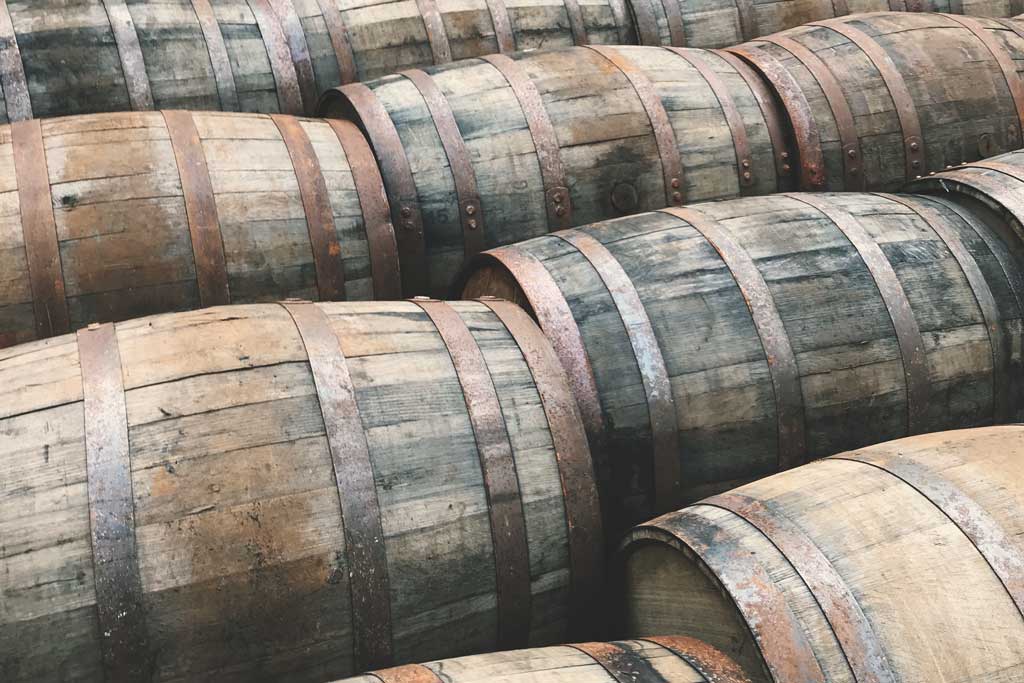
Is single malt scotch a blend?
In a sense – yes. This may spoil the illusion, but single malts are actually a mixture of other single malts, just all from the same distillery. Contrary to popular belief, single malts are made from a combination of many multiples of a single distillery’s reserve of casks.
The reason for this is justified by the sheer variance of colour and flavour from the ageing process. As no two casks are the same, the resultant whisky within can vary vastly in character, despite being the exact same sage. Even from the same batch!
This gives distilleries a headache when it comes to consistency. In order to achieve the same colour and taste, master distillers therefore must combine whiskies from tens or even hundreds of casks. These can be of varying colours, flavours and ages.
For example, a Talisker 10 year old single malt may contain some whiskies as old as 20 or 30 years. But never younger than 10 years in order to meet the age statement on the bottle.
This process (known as marrying) allows distilleries to repeatedly create their signature flavours time and time again. So yes, single malts are a sort of ‘distillery blend’. There’s just no whiskies involved from other distilleries. (That would definitely be a blended Scotch!)
And in case you were wondering…
Single cask whiskies are the ones that only come from a single cask.
Due to maturation variability, single malt single cask whiskies are a much rarer breed. Only if a cask demonstrates exceptional characteristics of colour, smell and flavour will it be selected for a single cask bottling. Subsequently, these rarer ‘exemplary’ whiskies tend to fetch a much higher price. But I digress.
11 best blended Scotch whiskies
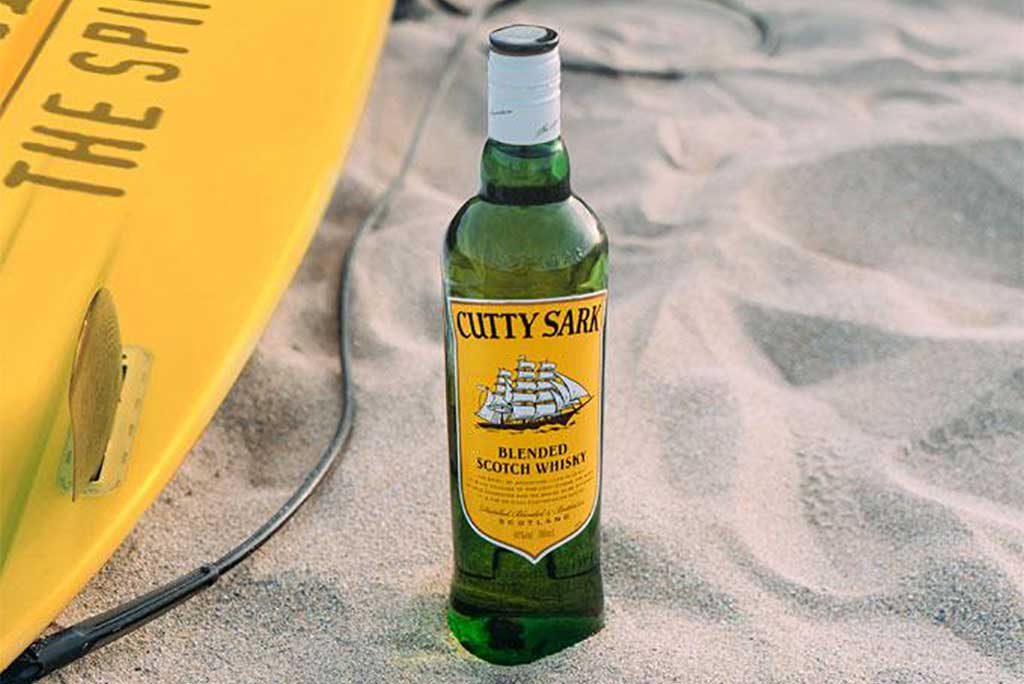
Cutty Sark Blended Scotch Whisky
Cutty Sark Blended Scotch Whisky, a renowned name in the spirits world, traces its origins back to the 1920s. The blend is named after the famous British tea clipper ship, Cutty Sark, reputed to be the fastest clipper boat of its time.
This Scotch whisky is a lively blend of malts and grains, offering a tantalizing tasting experience. On the nose, Cutty Sark Blended Scotch Whisky enchants with soft, floral notes, accentuated by a hint of spice and fresh fruit. On the palate, it reveals mixed peels and an abundance of barley, manifesting the distinct influence of Speyside-style single malt in the blend. This revered blend, with its captivating story and exquisite taste, is truly a testament to the fine art of Scotch whisky blending.
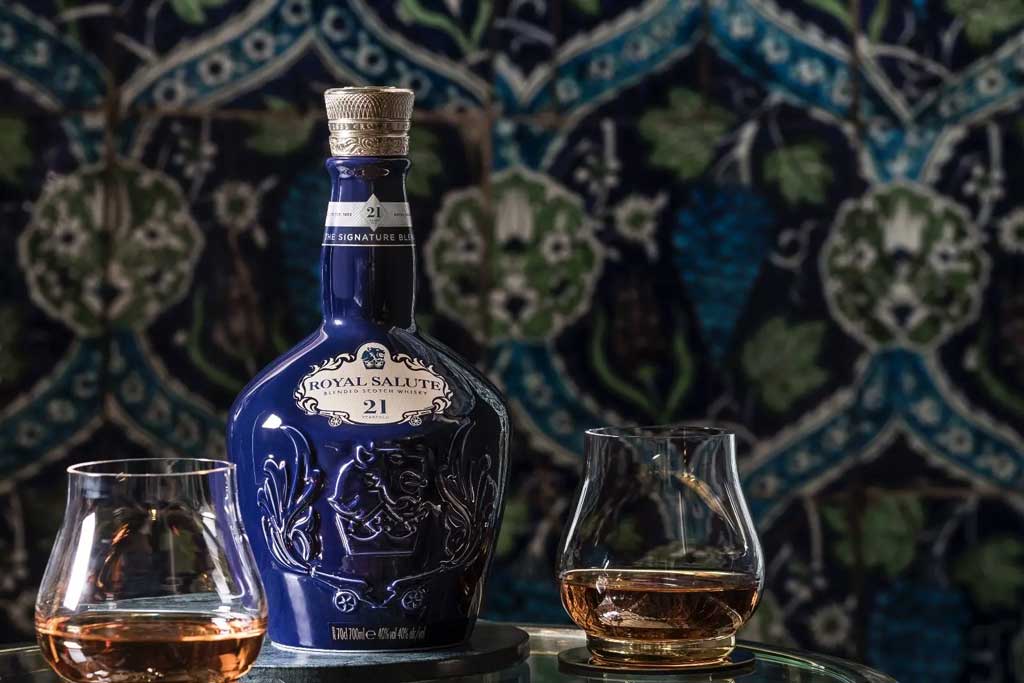
Royal Salute 21 Year Old Signature Blend Whisky
A premium Scotch blend originating from the Strathisla distillery, the oldest operating distillery in the Highlands of Scotland. This distillery has been meticulously crafting Scotch Whisky since 1786.
The nose of this prodigious blend is filled with the fragrance of autumn fruits and floral notes, underpinned by a harmonious balance of nutty oils and wood. On the palate, it carries a full and deep flavour, enriched by the delicate touch of sweet oranges, pears, and a hint of smokiness that speaks to its oak barrel aging. This combination of flavours gives the Royal Salute 21 Year Old Signature Blend a long, smooth, and enchanting finish that is simply unforgettable. This whisky is, without a doubt, a testament to the art of blending, manifesting a drinking experience that is both luxurious and uniquely satisfying.
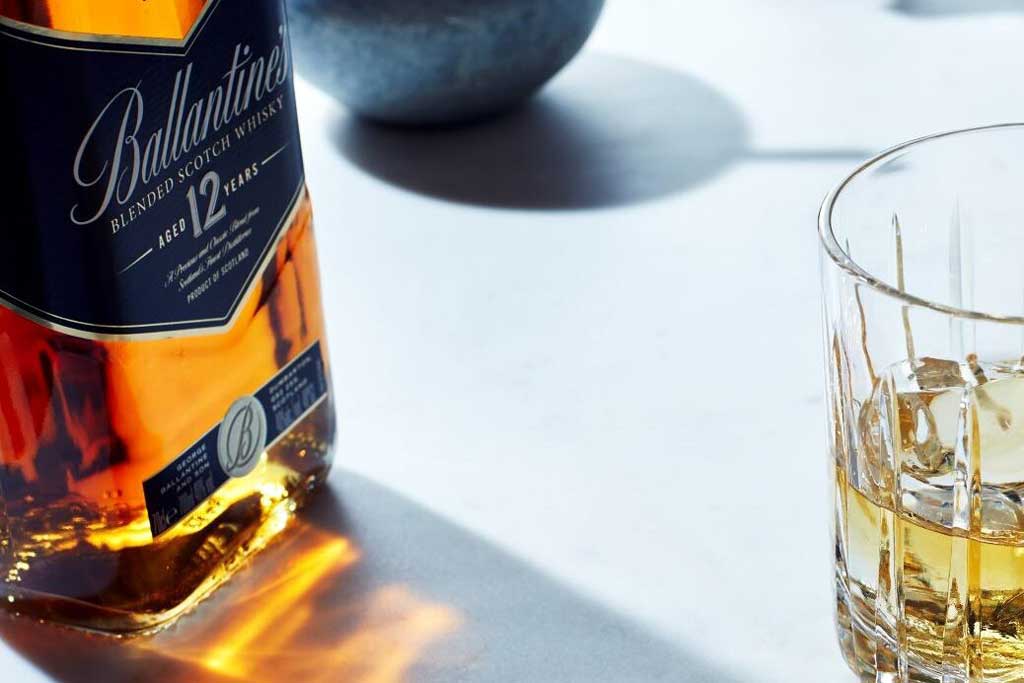
Ballantine’s 12 Year Old Whisky
This rich, smooth, and complex blended Scotch whisky is aged for 12 years, carefully crafted from a selection of malt and grain whiskies from an estimated 50 Scottish distilleries.
The nose reveals a delightful orchestra of fruit salad drizzled with sherry and sprinkled with mixed nuts. On the palate, Ballantine’s 12 Year Old unfurls a creamy symphony of mochaccino and buttery pastry underpinned by a subtle spice note that lingers, providing a harmonious balance of flavours. This blend is a rewarding exploration of flavours, carrying you through a journey of Scotland’s whisky tradition with every sip.
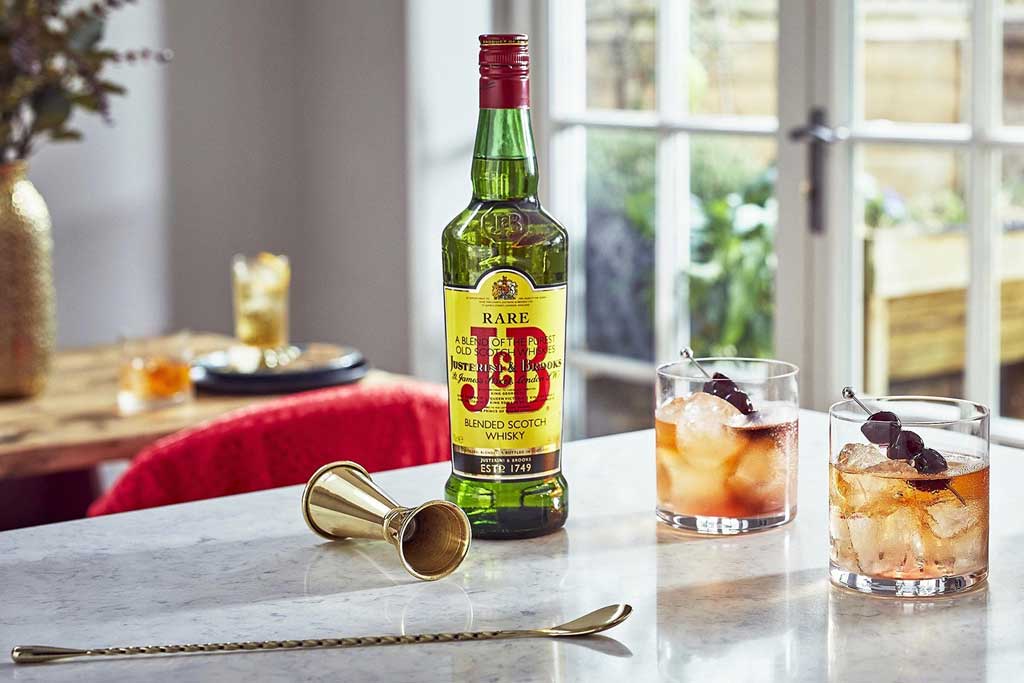
J&B Rare Whisky
This immensely popular 18th century Scotch blend is crafted from a selection 42 different Scotch single malts and grains, predominantly from the Speyside region known for its fruity and delicate malts.
On the palate, J&B Rare introduces you to a delightful sweetness of toffee apples, swiftly followed by the warm, nutty essence of walnut. As the whisky breathes, the scent of aromatic cedar wood mixed with the zesty aroma of orange peel starts to emerge, adding complexity to the nose. This blended Scotch whisky truly showcases the artful fusion of diverse flavours and the masterful balance it achieves, making it a favourite among whisky connoisseurs worldwide. (Especially in America!)
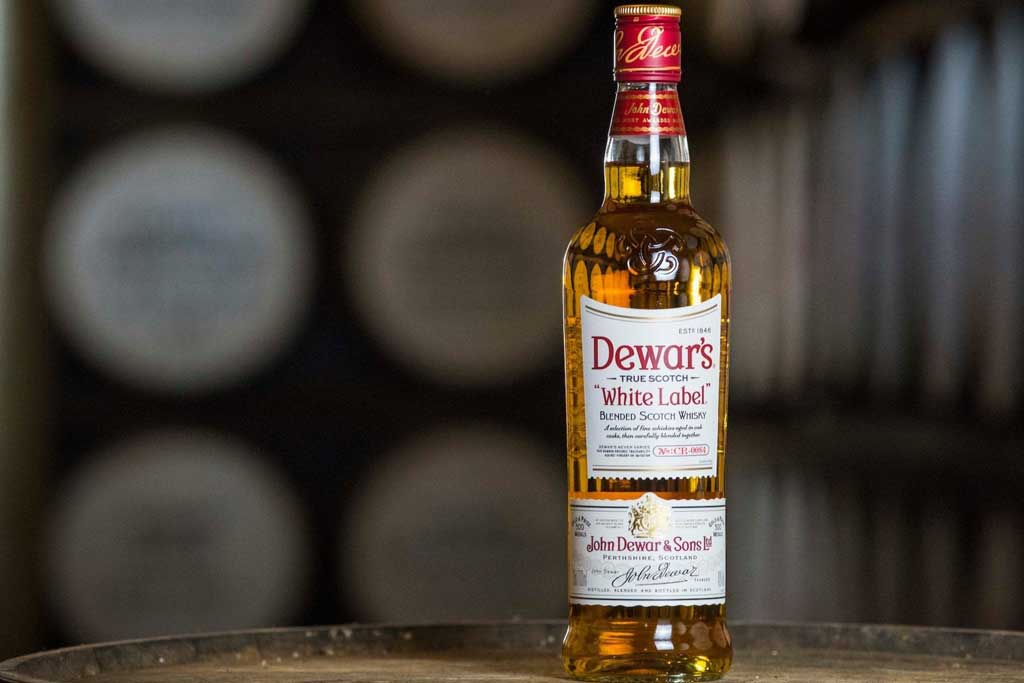
Dewar’s White Label
This quintessential blended Scotch whisky is a stellar creation from the famed Dewar’s brand. Showcasing an intricate blend of around 40 different whiskies, with Aberfeldy single malt at its core. This masterful blend gives Dewar’s White Label a harmonious complexity that’s hard to find in this competitive price range.
The nose greets you with a bouquet of sweet honey, ripe peach, crisp apple, and hints of wood, reminiscent of a hayfield under the soft golden hue of a setting sun. The palate carryies notes of vanilla fudge, a hint of smoke, toffee sweetness, heather honey, and a touch of oak. Dewar’s White Label blended Scotch whisky is an invitation to a flavourful journey, one that encapsulates the essence of fine Scotch.
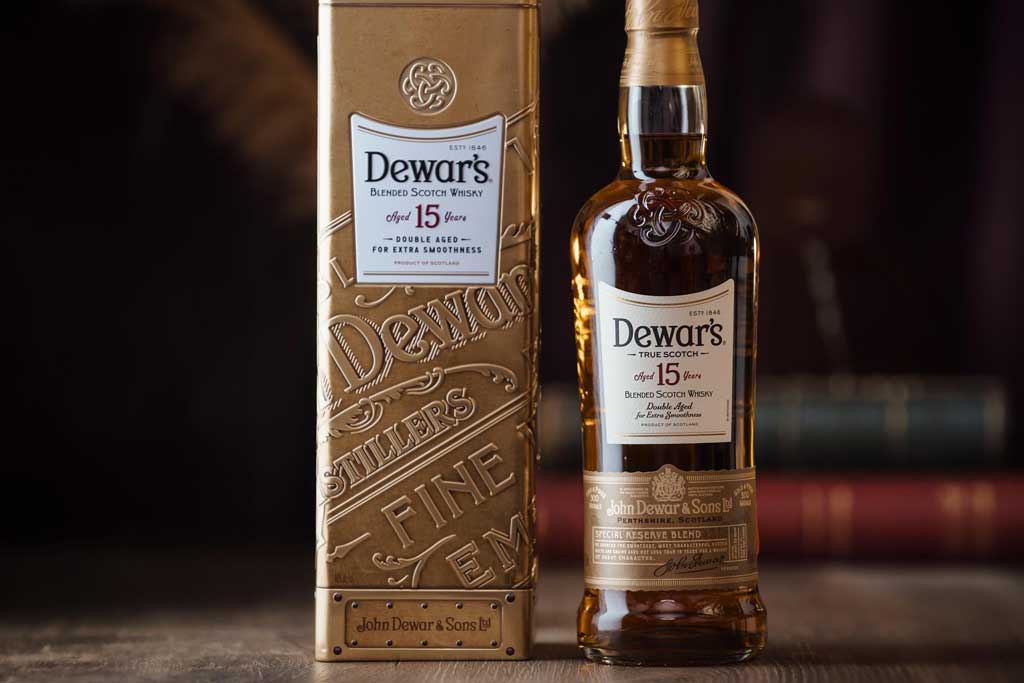
Dewar’s 15 Year Old
Known as “The Monarch”, this 15 year old blended Scotch is a premium expression, meticulously crafted at the renowned Aberfeldy distillery – home of Dewar’s blending dynasty. It harmonises carefully select whiskies aged in bourbon and sherry casks.
Dewar’s 15 begins with a fragrant nose that unfolds a balanced medley of Sherried spices, nutty undertones, and a hint of apple skin. The palate reveals an oily richness of walnut paving the way for fresh malt and succulent sultanas. The experience rolls onto a chewy vanilla toffee, leaving a delightful sweetness lingering on your taste buds. Whether you’re a seasoned connoisseur or a novice, Dewar’s 15 Year Old is one worth tyring.
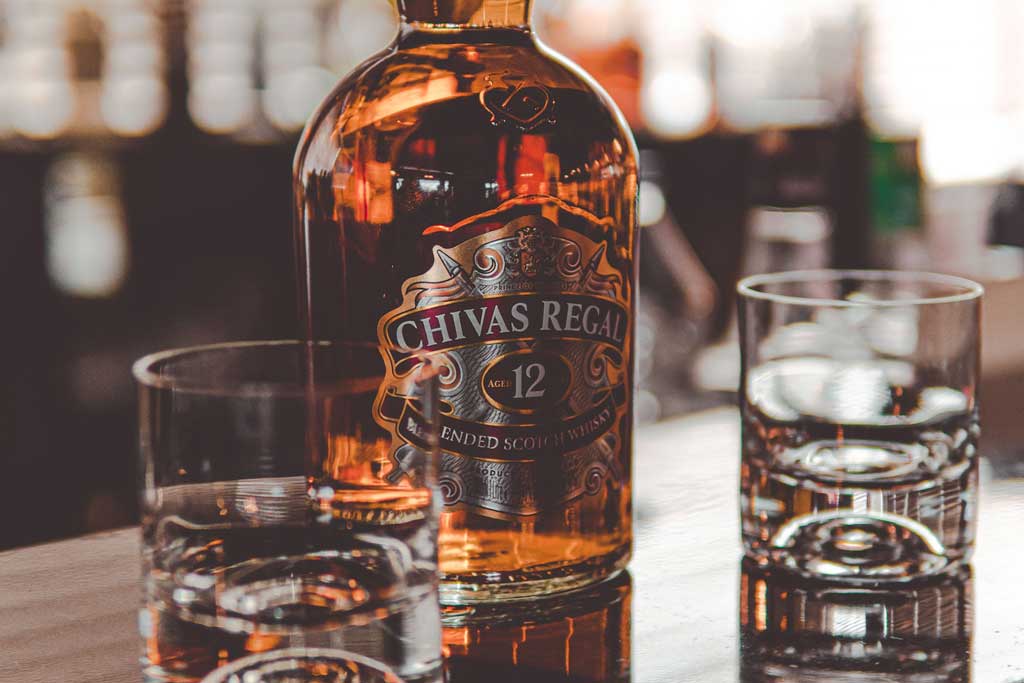
Chivas Regal 12 Year Old
Hailing from the revered distilleries of Speyside and Highlands, Chivas Regal 12 Year Old carries the richness of its origins with an impeccable blend of malt and grain whiskies. Aged 12 years in oak casks, it yields a soft, smooth and rich full-bodied flavour.
A harmony of herbs, honey, and ripened fruits dances on the palate, while hints of aniseed and vanilla custard cater to the more discerning taste. The mid-palate is graced by notes of barley malt, finely interspersed with allspice. The experience culminates in a subtle crescendo of wood shavings and dried banana chips, leaving a lingering hint of cassis. The depth of flavours and the exquisite balance of Chivas Regal 12 Year Old make it a standout in its class, perfect for those seeking a refined and sophisticated taste in blended Scotch whisky.
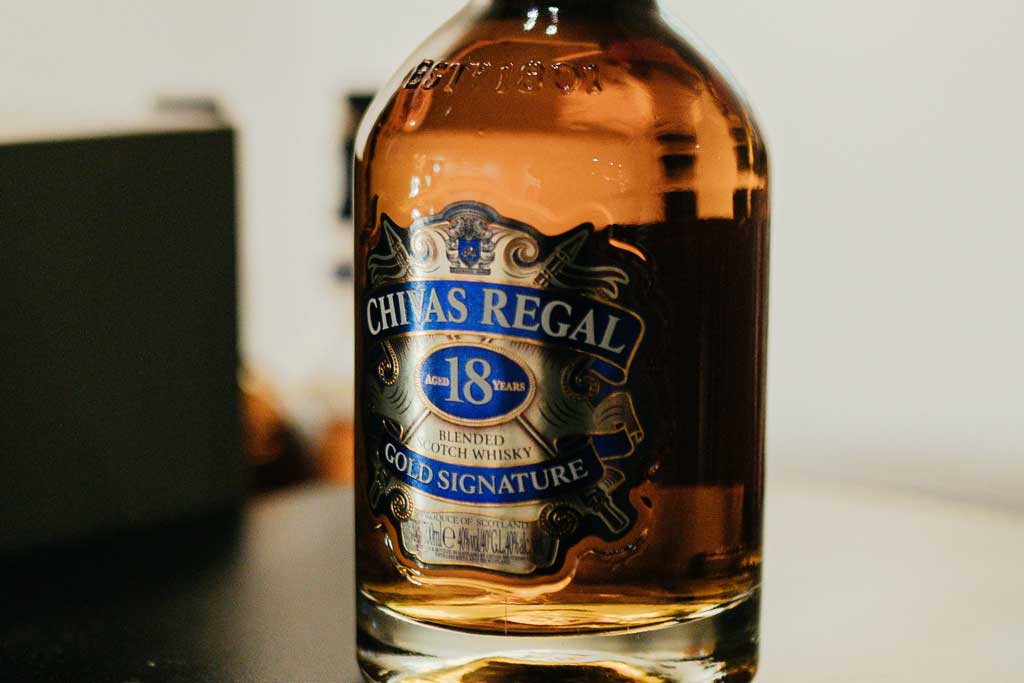
Chivas Regal 18 Year Old
Originating from the early 19th century in Aberdeenshire, the Chivas brothers’ unique vision of blending whiskies paved the way for the creation of the Chivas Regal 18 Year Old.
This blended Scotch whisky is an exquisite blend of grain and malt whiskies from more than 20 distilleries across Scotland, aged for at least 18 years. Enticingly, it boasts a deep amber colour and an exceptionally full-bodied mouthfeel.
On the palate, it reveals a harmony of dried fruits and buttery toffee – perfectly balanced by hints of dark chocolate and spices. As it opens up, the flavours intensify, revealing layers of rich malt, bursts of citrus, and a touch of smoke. The finish is long and warming, leaving a lingering taste of toasted almonds and a hint of cinnamon. This whisky is not just a drink, it’s an experience.
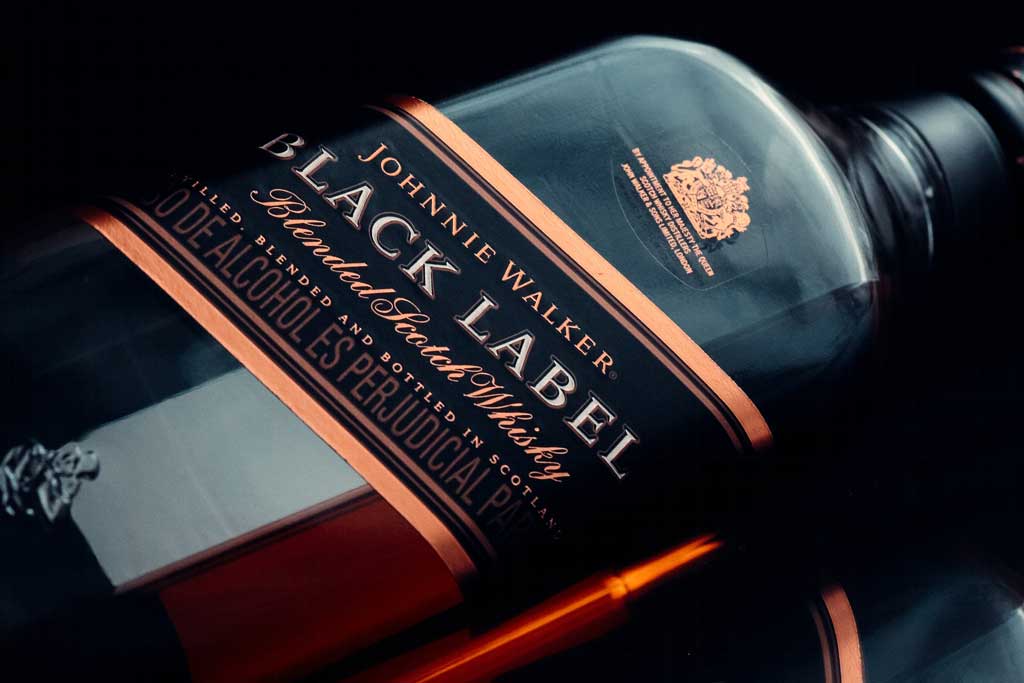
Johnnie Walker Black Label
Possibly one of the most popular blended Scotch whiskies, this article wouldn’t be complete without mentioning Johnnie Walker Black Label. Sourced from over 29 Scottish distilleries, the meticulously chosen selection of malt and grain whiskies are each aged for a minimum of 12 years.
The primary distilleries include Clynelish in the Highlands, known for its fruitiness, Cardhu on Speyside, celebrated for its elegant sweetness, Glenkinchie with its floral character, and Cameronbridge, which adds depth with its grain whisky. There’s also a whisper of smoke from Caol Ila, a nod to the traditional peaty profile of Islay whiskies.
On the nose, this whisky leads you into a winter landscape with notes of Christmas spice and treacle, punctuated by hints of white pepper and citrus that add a pleasant sharpness. The palate paints a rich and full tableau, starring notes of wood smoke and dry spice, a gentle reminder of a crackling fire. There’s an undercoat of barley and cereal that brings a comforting warmth, and a touch of creamy toffee that rounds out the profile.
If you’re unsure which blended Scotch to try first, this iconic bottle would be a stellar start. You really can’t go wrong.
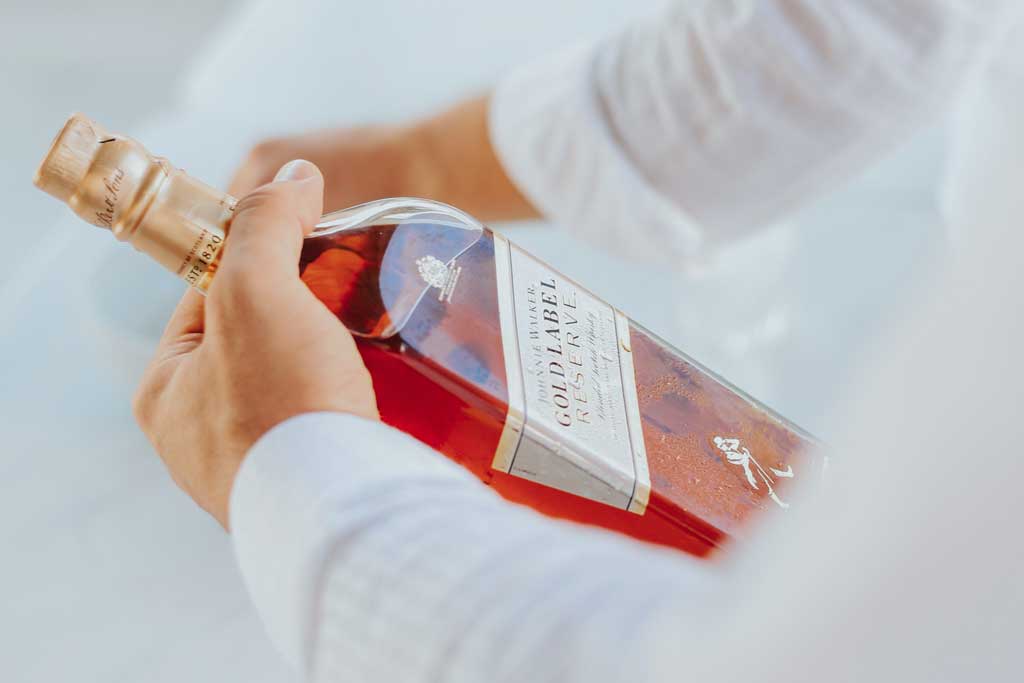
Johnnie Walker Gold Label Reserve
Stepping things up from the younger Black Label edition, Gold Label Reserve is a distinguished blend. Centred around a core of single malt whisky from Clynelish, it marries malts from Cardhu and Blair Athol with grains from Cameronbridge distilleries – all matured in carefully selected oak casks for 18 years.
On the palate, this Scotch unfurls with an exquisite sweetness; characteristic of honey-laced Speyside malts. This is swiftly followed by a subtle bloom of floral freshness. As it washes over the palate, the whisky reveals its complexity, teasing with hints of ripe banana enveloped in a creamy vanilla sweetness. The finish is long and warming, with a lingering spice that echoes the delicate nutmeg notes detected on the nose.
Johnnie Walker Gold Label Reserve is a masterful symphony that celebrates the harmonious and luxurious character of blended Scotch whisky. Its captivating complexity and depth of flavour make it a sublime choice for those seeking to explore the rich tapestry of flavours within the world of whisky.
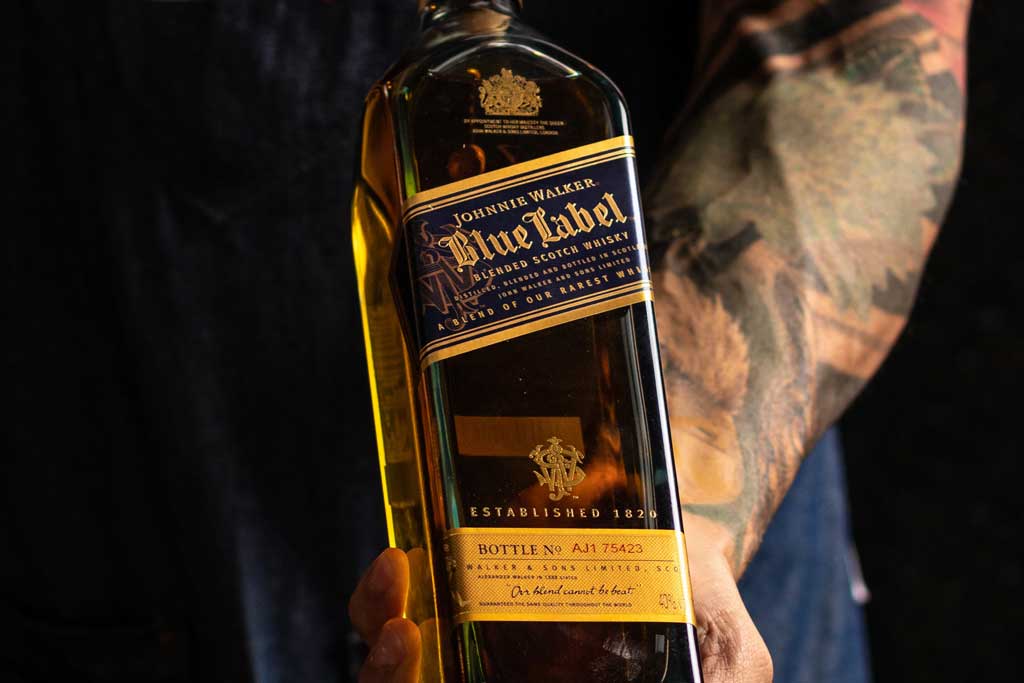
Johnnie Walker Blue Label
Ending this list at the ultra-premium end of the Scotch blend market, is the famed Johnnie Walker Blue Label. A paragon of rarity and sophistication in the world of blended Scotch whisky. Representing ‘the four corners of Scotland’ Blue Label is crafted from just 1 in every 10,000 casks from Diageo’s vast reserves, containing single malt and grain whiskies ranging between 15 to 60 years old.
The nose is fragrant and robust, evoking the warmth of oak and crisp spice intertwined with notes of dried fruit and pastries. Enticing hints of berry fruits, aniseed, cedar, and citrus add layers of complexity. The palate reveals sweetness of toffee and the wistful whispers of Islay smoke. Subtle notes of chocolate and grass mingle with a satisfying hit of malt.
The finish is as floral as it is oaky, delicately lengthened by a plume of peat smoke. It leaves a lingering taste of dried fruit, spice, and honey, making Johnnie Walker Blue Label an unrivalled specimen of blended Scotch whisky.
Blended Scotch whisky FAQ’s
What is the difference between scotch and blended scotch?
‘Scotch’ is a collective term for the various categories of whisky made and aged in Scotland. This can be single malt or the three sub-types of blended whisky. Meanwhile ‘blended Scotch’ is a specific category made from both single malts and grain whiskies mixed together.
Single malts and blended Scotch are two of the main variants of Scottish whisky, however there are actually five main types as featured in the list below.
What are the 5 types of Scotch whisky?
- Single malt Scotch whisky
- Single grain Scotch whisky
- Blended malt Scotch whisky
- Blended grain Scotch whisky
- Blended Scotch whisky (This article)
Is Johnnie Walker single malt or blended?
Johnnie Walker (almost) exclusively make blended Scotch whisky, with the exclusion of their Green Label edition which is a blended malt whisky. For their core range of bottles, they specialise as one of the most popular blended Scotch brands, using malt and grain whiskies from all over Scotland.
Their range stretches from their very affordable Red Label and Black Label whiskies, right through to their premium and ultra premium blends such as Gold Label Reserve and their highly esteemed Blue Label.
If you’re curious about the Johnnie Walker range, you might enjoy this helpful article which explores and compares each of their whiskies.
Is blended Scotch real Scotch?
Yes. Blended Scotch is real Scotch as it’s made from malt and grain whiskies which have been distilled and aged in Scotland. If you’re confusing single malts as the only ‘real’ type of Scotch whisky, you’re misinformed. This is becuase any whisky made in Scotland can be classified as Scotch – as long as it’s been made to the strictly enforced standards.
Grain whiskies (as opposed to single malts) are an integral and major category of whisky made in Scotland. Made from alternative cereal grains, they’re a crucial component within blended Scotch – by far the most common type of Scotch produced.


